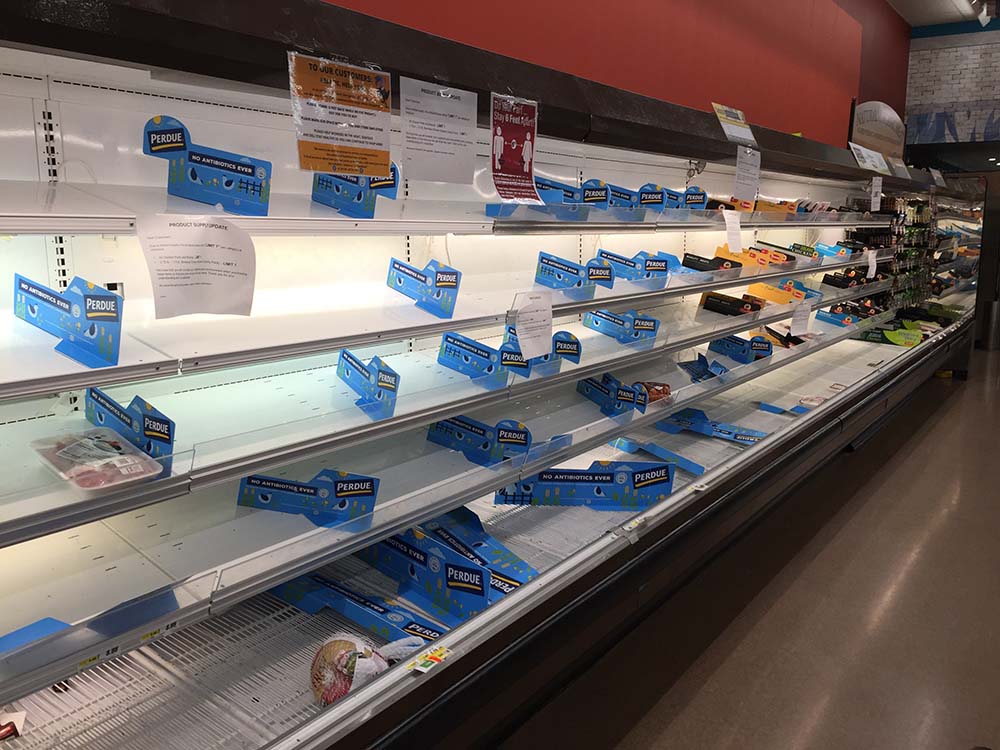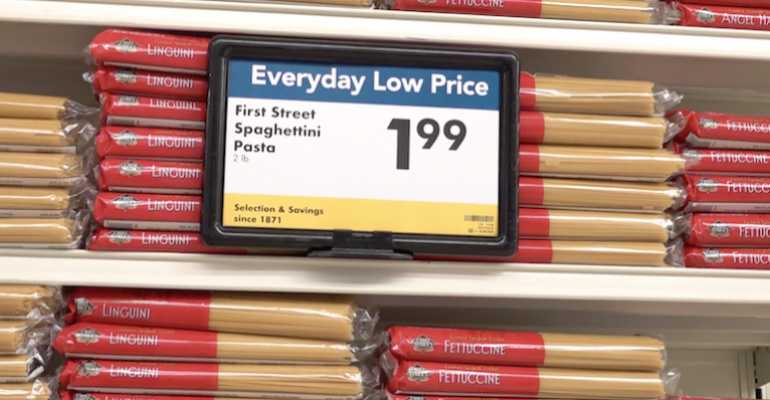Swings in grocery demand and availability amid the coronavirus pandemic — triggered by consumer stockpiling and supply chain disruptions — fueled historic increases in food prices in April, according to FMI-The Food Industry Association (FMI) and the National Grocers Association (NGA).
This week, the U.S. Bureau of Labor Statistics (BLS) reported that the Consumer Price Index (CPI) for food rose 1.5% month-to-month for April, compared with a 0.3% uptick in March, and was up 3.5% year over year.
Bigger gains were seen in the food-at-home CPI, which grew 2.6% month-to-month in April — the largest monthly increase since February 1974, noted BLS, part of the Department of Labor. The gain was 0.5% in March. Year over year, food-at-home pricing climbed 4.1% for April.
Meanwhile, food-away-from-home prices — primarily restaurants — inched up 0.1% on a monthly basis in April, down from a 0.2% rise in March. Compared with a year ago, food-away-from-home pricing edged up 2.8%.
"The unprecedented demand challenges we’re witnessing in the food supply chain as a result of COVID-19 have affected the prices of some products in the grocery store,” FMI said in a statement yesterday. “Grocery shoppers can rest assured that a cost increase is not related to increased profits and instead due to a spike in costs due to labor, lower-capacity production, cleaning and sanitation protocols, and even transportation demands.”
BLS said April’s month-to-month uptick spanned all six major grocery-store food groups, whose prices rose at least 1.5%. The index for meat, poultry, fish and eggs saw the largest gain, up 4.3%, while the index for eggs alone jumped 16.1%. Experiencing its biggest monthly increase ever was the index for cereals and bakery products, which climbed 2.9% month over month for April. Non-alcoholic beverage pricing rose by the same percentage — the category’s fourth consecutive uptick — and the indexes for dairy and for fruit and vegetables both increased 1.5%.
“As this global pandemic continues, we are seeing events and issues that may impact the cost of commodities and food products moving forward. Despite the unprecedented situation brought on by this public health crisis, independent grocers often grapple with increased energy, packaging, labor or commodity costs,” NGA said in a statement.
“Grocers are working with their suppliers to mitigate price increases to the best of their ability and keep prices as steady as possible,” explained NGA, which represents the independent grocery retail sector. “But processing plant disruptions, along with the surge in demand, will have an impact on costs of goods and, in turn, consumers may experience higher prices on some products.”

Though the pandemic has driven consumer demand surges and supply shortfalls, FMI and NGA said grocery retailers are working hard to maintain in-stocks and hold the line on pricing.
All six major grocery food group indexes also rose for the food-at-home index year over year in April. Price hikes ranged from 0.4% for fruit and vegetables to 6.8% for meat, poultry, fish and eggs, BLS reported. At the upper end of the increases were dairy, up 5.2% versus a year ago, and nonalcoholic beverages, up 5%.
“Due to COVID-19, grocery shoppers may witness temporary increases on prices of certain commodities,” FMI noted. “Regarding meat, for instance, in order to maintain social distancing practices, many manufacturing lines have had to increase the spacing of personnel working the production, packaging and warehousing functions. This generally results in lower production rates per employee, and longer production time frames to produce the same amount of product as supplied pre-pandemic.
“Increased demand and reduced supply from hard-hit regions have also reduced the ability of manufacturers to get necessary materials, such as packaging, and have resulted in sourcing of higher-cost materials and less opportunity for bulk buying,” FMI added.
Both NGA and FMI emphasized that food pricing is influenced by a myriad of factors and retailers aren’t inflating prices during the COVID-19 crisis. FMI said the grocery industry maintains a net 1% to 2% profit margin, about the same as it has for over two decades.
“As costs rise from producers and the supply chain, our members are following the same pricing structures and policies as they always have,” according to NGA.
For our most up-to-date coverage, visit the coronavirus homepage.





